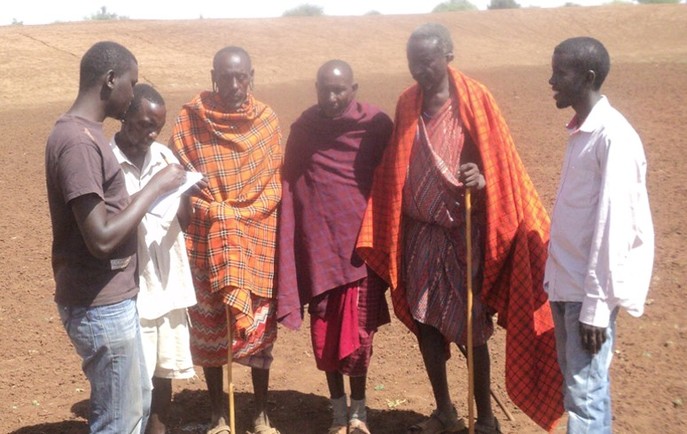 Sakimba Kimiti (extreme left ) during field work.
Sakimba Kimiti (extreme left ) during field work. Sakimba integrated scientific approaches and local knowledge to assess changes in the Amboseli ecosystem over time, the causes of changes and the impact of the changes on pastoralists. He stratified the Amboseli ecosystem into nomadic, semi-nomadic and sedentary land uses under group tenure and private holdings. The four decade of change were divided into a pre-park period (1967-76), pre-settlement (1977-86), post-settlement (1987-2006) and the post-2009 drought.
From the resource maps drawn by the community, grazing areas have declined significantly over the period. The decline was more pronounced in the sedentary subdivided lands and the semi-nomadic locations, less so in nomadic locations. Areas of cultivation have also expanded over the period in both sedentary and semi-nomadic land sites. The changes have led to a reduction in household herd size in all the land locations, with the biggest declines in the sedentary land use sites.
The results of the study show that pastoralism remains a key livelihood strategy in Amboseli. Monitoring rangeland changes through community perceptions is a vital step in designing sustainable strategies for managing change and in strengthening participatory planning process.
 RSS Feed
RSS Feed
